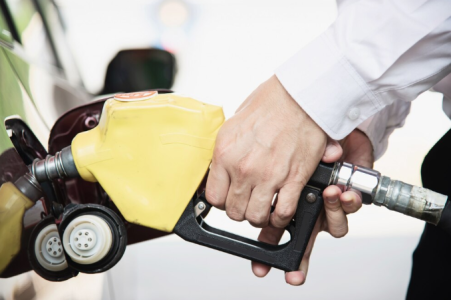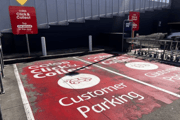Australian government proposes plan that could save motorists over a thousand dollars every year
By
VanessaC
- Replies 14
Heads-up, motorists: the Albanese government is doubling down on its proposal for an aggressive plan to bring the emissions from Aussie vehicles in line with global standards.
The proposal aims to encourage a revolution in car efficiency, which could mean substantial savings on your trips to the fuel station.
Energy Minister Chris Bowen is propelling the plan forward with promises that motorists in the outer suburbs and regional areas might save as much as $1,695 annually.
This is a chapter in a larger narrative concerning cleaner technologies and climate change mitigation, a topic that has become the focus of many Australian and global policies.
The government's proposal would establish fuel efficiency standards starting next year, introducing fleetwide pollution caps on automotive manufacturers.
The objective is to move Australia in step with current practices in other developed nations.
Notably, this proposal doesn’t outright ban any specific car model. Nevertheless, brands will face penalties if the average emission from all their imported vehicles exceeds an emissions target.
This target illustrates a dramatic reduction of more than 60 per cent between 2025 and the end of the decade.
Under this plan, the standard functions as a carbon price which will force carmakers to either increase the sales of zero and low-emissions vehicles and reduce the sale of high-emitting models such as utes and SUVs, or bear financial penalties.
However, the proposed changes haven't gained unanimous approval.
Critics, predominantly from the Coalition and large sections of the car industry, claimed that it could raise vehicle prices by several thousands of dollars.
Nevertheless, Minister Bowen has sought to alleviate those concerns by spurring discussions about the potential fuel savings for motorists.
New departmental analyses have been issued that demonstrate substantial yearly savings due to lower fuel costs.
The government estimated that by 2028, a new vehicle owner in Gosford or Wyong on the New South Wales Central Coast could save an average of over $1,600 a year.
On the other hand, Bellarine Peninsula and Surf Coast Victorian drivers would be eligible for a $1,695 savings, while drivers from Caboolture and Ipswich in Queensland might save upward of $1,300 per year.
Western Australian drivers from Bunbury, Margaret River, and Brusselton may also save up to $1,200 per year.
Drivers in cities and the inner suburbs, who generally travel fewer kilometres, could see slightly lower savings, with an average motorist in inner Sydney potentially saving around $826.
The analysis also revealed that the Australian auto industry has a long way to go regarding fuel efficiency when compared globally.
New Australian passenger cars consume approximately 15 per cent more fuel than in New Zealand, 20 per cent more than in the US, and an astounding 40 per cent more than in the EU.
Minister Bowen also responded to concerns that the measure would lead to more expensive vehicle prices for Australians.
'That hasn’t happened anywhere else in the world, and why would it happen in Australia?' he said.
'Peter Dutton is arguing that Australians deserve less choice and should be paying more for more petrol.'
'He can make that argument if he wishes. The government chooses to make the argument that it’s about time Australia catches up with the rest of the world and gives Australians better choices.'
A frequent criticism of the policy is the lack of electric and low-emission utes and four-wheel drives, to which Minister Bowen responded that options would be increasingly more available.
'There are some, and they are improving every day,' he said.
'This is all about choices…and what we’re not doing is saying we’re going to phase out any particular type of car.'
Coalition Energy Spokesperson Ted O’Brien also branded the policy as a form of 'tax'.
'We’re happy to work constructively with the government, but they have to strike the right balance between emissions, price and choice,' he said.
'They have failed to strike any balance there.'
This climate-conscious move has led to the withdrawal of Tesla and Polestar from the Federal Chamber of Automotive Industries (FCAI) last week.
These firms argued that the lobby group threatened the proposed regulation’s implementation. TESLA also accused FCAI of contributing to a misconception that the regulation would elevate vehicle prices.
However, brands like Tesla and Polestar are set to benefit from the proposed regulation.
They could sell the credits earned to manufacturers who fail to meet the stipulated limits, thus contributing to their profitability.

What are your thoughts on the government’s proposal? Let us know in the comments below.
The proposal aims to encourage a revolution in car efficiency, which could mean substantial savings on your trips to the fuel station.
Energy Minister Chris Bowen is propelling the plan forward with promises that motorists in the outer suburbs and regional areas might save as much as $1,695 annually.
This is a chapter in a larger narrative concerning cleaner technologies and climate change mitigation, a topic that has become the focus of many Australian and global policies.
The government's proposal would establish fuel efficiency standards starting next year, introducing fleetwide pollution caps on automotive manufacturers.
The objective is to move Australia in step with current practices in other developed nations.
Notably, this proposal doesn’t outright ban any specific car model. Nevertheless, brands will face penalties if the average emission from all their imported vehicles exceeds an emissions target.
This target illustrates a dramatic reduction of more than 60 per cent between 2025 and the end of the decade.
Under this plan, the standard functions as a carbon price which will force carmakers to either increase the sales of zero and low-emissions vehicles and reduce the sale of high-emitting models such as utes and SUVs, or bear financial penalties.
However, the proposed changes haven't gained unanimous approval.
Critics, predominantly from the Coalition and large sections of the car industry, claimed that it could raise vehicle prices by several thousands of dollars.
Nevertheless, Minister Bowen has sought to alleviate those concerns by spurring discussions about the potential fuel savings for motorists.
New departmental analyses have been issued that demonstrate substantial yearly savings due to lower fuel costs.
The government estimated that by 2028, a new vehicle owner in Gosford or Wyong on the New South Wales Central Coast could save an average of over $1,600 a year.
On the other hand, Bellarine Peninsula and Surf Coast Victorian drivers would be eligible for a $1,695 savings, while drivers from Caboolture and Ipswich in Queensland might save upward of $1,300 per year.
Western Australian drivers from Bunbury, Margaret River, and Brusselton may also save up to $1,200 per year.
Drivers in cities and the inner suburbs, who generally travel fewer kilometres, could see slightly lower savings, with an average motorist in inner Sydney potentially saving around $826.
The analysis also revealed that the Australian auto industry has a long way to go regarding fuel efficiency when compared globally.
New Australian passenger cars consume approximately 15 per cent more fuel than in New Zealand, 20 per cent more than in the US, and an astounding 40 per cent more than in the EU.
Minister Bowen also responded to concerns that the measure would lead to more expensive vehicle prices for Australians.
'That hasn’t happened anywhere else in the world, and why would it happen in Australia?' he said.
'Peter Dutton is arguing that Australians deserve less choice and should be paying more for more petrol.'
'He can make that argument if he wishes. The government chooses to make the argument that it’s about time Australia catches up with the rest of the world and gives Australians better choices.'
A frequent criticism of the policy is the lack of electric and low-emission utes and four-wheel drives, to which Minister Bowen responded that options would be increasingly more available.
'There are some, and they are improving every day,' he said.
'This is all about choices…and what we’re not doing is saying we’re going to phase out any particular type of car.'
Coalition Energy Spokesperson Ted O’Brien also branded the policy as a form of 'tax'.
'We’re happy to work constructively with the government, but they have to strike the right balance between emissions, price and choice,' he said.
'They have failed to strike any balance there.'
This climate-conscious move has led to the withdrawal of Tesla and Polestar from the Federal Chamber of Automotive Industries (FCAI) last week.
These firms argued that the lobby group threatened the proposed regulation’s implementation. TESLA also accused FCAI of contributing to a misconception that the regulation would elevate vehicle prices.
However, brands like Tesla and Polestar are set to benefit from the proposed regulation.
They could sell the credits earned to manufacturers who fail to meet the stipulated limits, thus contributing to their profitability.
Key Takeaways
- Energy Minister Chris Bowen has highlighted the fuel-saving benefits of proposed pollution caps on new vehicles, with potential annual savings for motorists.
- New fuel efficiency standards are set to commence next year, aiming to reduce vehicle emissions and align Australia with international standards.
- The standards will impose a carbon price on car manufacturers, with financial penalties for those exceeding emissions targets.
- The scheme has faced opposition from the Coalition and parts of the car industry. Still, it is backed by predictions of significant fuel cost savings for consumers, especially those in outer suburban and regional areas.
What are your thoughts on the government’s proposal? Let us know in the comments below.








